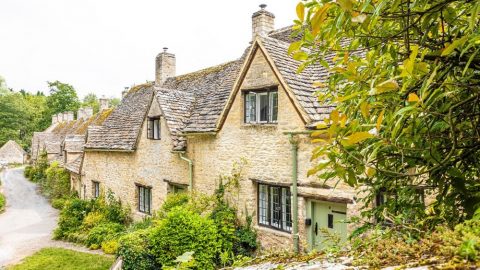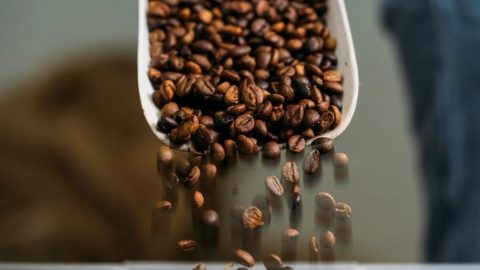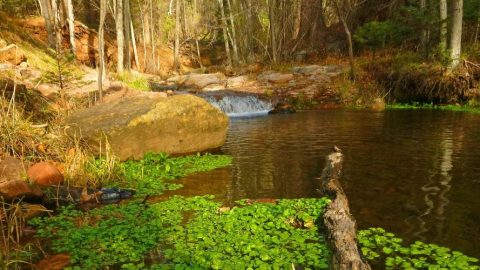(CNN) — It was an ordinary Friday for Susanna Stevens-Johnson. She woke up in snowy Mountain Village, on the Yukon Delta in Alaska, and checked her Facebook account.
A Yup’ik Alaskan who grew up in and around Mountain Village, Stevens-Johnson was intrigued. She clicked the link and read how German creative director Jennifer Skupin found a box of slides at a Dutch flea market back in 2008, digitized them, and discovered stunning shots taken across the then-newly inaugurated US state.
Skupin tried to identify people in the photos at the time, but had no luck. Over a decade later, she’d rediscovered the slides languishing in her closet.
After a quick glance through the gallery, Stevens-Johnson moved her attention to a sewing project, lining a down jacket with velveteen for her granddaughter.
It was only later, when her husband Peter came home and she told him about the article, that curiosity prompted her to take another look.
Stevens-Johnson clicked through the images, marveling as she recognized landscapes, old classmates, neighbors and friends. Many of the people in the photos are Yup’ik, part of Alaska’s indigenous community.
Then she saw it. Her sister Marcia, instantly recognizable. Stevens-Johnson took a sharp intake of breath.
“I said, ‘Well if she’s in the picture, I’ve got to be in there somewhere.'”
She continued clicking through. Sure enough, two photos later, there she was — pictured alongside Marcia, two other childhood friends, Irene Moses and Augusta Alstrom-Lang, and an older family friend called Agnes Eirvak-Devlin.
“I practically jumped off the couch and I exclaimed to Peter, ‘This is me!’ And I showed him the photo and he said, ‘Yeah, that is you.’ So, I was really excited.”
Clicking back to the previous image, Stevens-Johnson realized she was also in that first photo with Marcia. Her head is bowed, so she’s less immediately identifiable.
“I’m probably playing with the tip of my scarf because I was very shy then and I didn’t like being photographed.”
Stevens-Johnson, a graduate of the University of Alaska who taught elementary school for over three decades, was around 10 years old when these two photos were taken. She’ll be 71 this year.
She sent the photo to her family and to Augusta Alstrom-Lang’s daughter, and then spent hours combing through the Google Drive, adding comments and relishing this unexpected trip through time.
That Sunday marked the one-year anniversary of Stevens-Johnsons’ mother’s death, but the discovery of the photographs helped her through the day.
“It just kind of made the whole weekend real happy.”
Capturing a moment

Susanna Stevens-Johnson, pictured center today, recognized herself and her sister Marcia Pete in the rediscovered photos.
Susanna Stevens-Johnson/Jennifer Skupin
Jennifer Skupin’s Google Drive was inundated with messages within hours of the CNN story publishing.
“I believe that’s my aunt,” read one comment. “That’s my grandmother,” said another.
Walkie Charles, an associate professor of Yup’ik, the language of the Yup’ik people, at the University of Alaska Fairbanks, stumbled across the photos on Facebook.
The 63-year-old is pictured in the collection aged 3, wearing a check jacket, alongside his sister, Mary Keyes.
The location of the photo, scrawled on the back of the slide, is pinpointed as Kwiguk, a village that Charles says was relocated downriver in 1964 due to threat of erosion, becoming Emmonak.
Clicking through the Google Drive was an emotional experience for Charles, as he saw faces of people who have since passed away.
“We don’t have any photos of my brother when he was little, or even when he was older,” says Charles. “And so that captured our hearts so, so dearly.”
Charles was speaking to CNN Travel from his office at the University of Alaska Fairbanks. Also on the video call was Jennifer Skupin, finder of the photos.
“Jennifer, it was meant to be that you found this,” says Charles. “Little did you know that that story that was contained in these slides would be so emotionally charged, they would shake a part of the world that you have never even heard of.”
The photos, says Charles, offer the younger generation of Yup’ik people a glimpse of their communities in days past. Color photography was rare in the 1950s and 60s and the photographs are high quality.
“You could almost touch these people,” says Charles.
Alaska became a state in 1959. The photos in the collection were taken on the cusp of, and just after, statehood.
Charles says another important detail regarding the photos’ context is the 1918 Spanish flu pandemic, which took a deadly toll on Alaska’s rural villages.
“My generation are the children of the survivors,” says Charles. His own grandparents, on both sides, died during the outbreak.
The community was also impacted by Tuberculosis in the mid-20th century. Some of the photos appear to show a drive for TB testing and vaccinations.

Walkie Charles found a photo of him and his sister in the collection.
JR Anchetta, University of Alaska Fairbanks/Jennifer Skupin
“These photos present the resilience of the survivors and the hope for the new generation to move forward with a new vision, new sense of life, and a lust for challenge,” says Charles.
“Most of the stories/histories were taken away by the pandemic and TB epidemic, but these photos show the beginning of a new story.”
In Yup’ik culture, when someone in the community dies, their soul is passed on to a recently born baby. This newborn also takes the name of the deceased elder.
This adds another layer of meaning to the photographs for many, says Charles.
“For this generation, to see those older photos of older people and say, ‘I’m named after this person, I have never had a photo, I’ve never seen a photo of this person.’ It’s finally connecting.”
Charles says he recognizes some 100 people in the slides, around half of whom have since died. He’s commented on many of the photos on Skupin’s Google Drive with names, information and locations.
The mid-1970s were a turning point in Alaska’s recognition of its indigenous people, language and culture, says Charles.
During his career, Charles worked as a teacher, elementary education curriculum writer and now works at the University of Alaska, where he received his PhD.
“I head the Yup’ik Eskimo program,” he says. “It’s the only bachelor’s degree program in the world in an indigenous language.”
“And it all started in Kwiguk. It all started in in Emmonak. And it all started from those photos.”
Delightful discovery

Abby Augustine is in the photos, alongside her mother and sisters. In the center she’s pictured with her sister Emily Crane today.
Abby Augustine/Jennifer Skupin
Abby Augustine, who was just a baby in the early 1960s, is pictured in two photos in the collection. She’s being held by her mother, surrounded by her three sisters, Mary Richmond, Agnes Hoffman and Emily Crane. Like Walkie Charles, Augustine was born in Kwiguk and grew up in Emmonak.
Discovering the photos was a delight, Augustine tells CNN Travel. Her mother has since passed away, and seeing the photo was “like she visited us.”
“My daughter is super delighted to see a baby picture of me as we barely had any,” she adds.
“They’re all in black and white or a little bit tattered. And to see this in color, and in such, crisp clearness compared to the ones we have. It’s like an eye opener.”
Augustine also stumbled across the CNN Travel story on Facebook.
“I didn’t expect much while I was scrolling through the pictures, and then I started recognizing a few pictures from our area. And I was like, ‘Oh, how nice.’ And then kept scrolling. And then I ran across our photo.”
Augustine was in shock. She was sure it was her family, but she didn’t want to get ahead of herself — what if she was wrong?
She sent the first photo to her sister Mary, who is also in the picture, and was a little older at the time.
“Is this us?” asked Abby Augustine.
“I think so,” Mary said.
But, just to be sure, they also sent it to Agnes, their oldest sister, who is dressed in pink in the photo.
Agnes agreed. It was their family.
There are two versions of the photo in the collection; one is a little more close-up, with baby Abby smiling.
The photo, Augustine says, looks like it was taken in the summer. She reckons her father and brothers were out fishing for king salmon, and that’s why they’re not present.
Another photo in the collection might be Augustine’s uncle, Evan Nanuq Benedict. She’s not sure, but it definitely looks like him.
Augustine is pleased to see photographs in the collection celebrating the Yup’ik culture and traditions, from ice fishing to traditional dances.
“We still practice Eskimo dancing, by the way, traditional Eskimo dancing, so that was beautiful to see,” she says.
Like Charles and Stevens-Johnson, Augustine worked as an educator. She’s passionate about maintaining the Yup’ik language.
Reading the original CNN Travel story, Augustine was intrigued by the mystery surrounding the photographer’s identity.
“I got real curious,” she says.
A teacher friend of Augustine’s got in touch with her when the photos went live. This friend’s father traveled a lot and was a keen photographer, so the friend wondered if her dad might have taken the photos. This family were based in Alaska, but later moved to the Netherlands.
As for Walkie Charles, he’s unsure who the photographer was.
“It was only outsiders who, back then, had photos, or cameras, and so it was very rare for us to capture those special moments,” he says.
But Stevens-Johnson, who was 10 years old at the time, says she recalls the photographer, who would’ve stood out as an unexpected visitor to rural Alaska.
“If he was walking around the village taking photos, of course, we children in the village, we would follow anyone who came to the village.”
Mystery photographer
In one of the photographs of Stevens-Johnson — the one she didn’t immediately recognize, where her head is bent down — there’s a KLM bag in the corner of the image.
Jacques Condor, 91, who lived in Anchorage in the late ’50s and early 1960s, thinks this is the key to the story.
“These photos are not a mystery to me,” he says.
Condor, who is half Native American and half French Canadian, was assistant director of Greater Anchorage Incorporated in the late 1950s and early 1960s.
In the late 1950s, Alaska became, “the air crossroads of the world” as Condor puts it.
He points to the opening shot in the collection, of Amsterdam Schiphol Airport and recalls “airlines from Italy, France, Netherlands, Germany, Japan stopping over between London and Asia by way of Anchorage.”
Condor and his colleagues befriended many of the airline crews.
“They would stay with us and we’d go salmon fishing.”
He met his flight attendant wife, who was Japanese, during this period.
One year, Condor asked major airlines to nominate an employee to represent their country in one of his pageants and says Dutch carrier KLM sent a chief flight attendant called Marie Louise Crefcoeur, who he thinks may have been the photographer.
“She traveled all over the state as far, as she could go, along with other members of the KLM crew that she enthusiastically encouraged to travel,” he tells.
Condor befriended Crefcouer, hosting her at his house and joining some of excursions around Alaska. She was a keen photographer, he recalls.
Condor also thinks recognizes Crefcouer in a few of the pictures, including one of a woman crouching in snow, holding what appears to be a blue, white-rimmed KLM bag. Crefcouer gave him such a bag, says Condor.
“To the best of my memory of people, faces and places from events that happened 60-plus years ago, that is Marie Louise,” he says.
KLM told CNN it was unable to confirm the claim.
While the photographer’s identity remains unknown, for Jennifer Skupin, her project has been a success.
“It’s become quite secondary, who the photographer is, although it’s still very interesting to find out,” she tells CNN Travel.
“I think I feel now more connected to the people who recognize themselves.”
Almost a month after the article was first published, the Google Drive continues to get new comments, with individuals recognizing loved ones for the first time.
For the people in the photos, the rediscovered collection has even greater importance in present circumstances.
“It’s brought people together. Especially during this time where we cannot see each other,” says Charles. His voice cracks, and he takes a moment to compose himself.
“I haven’t seen my family since the pandemic began. This is bringing family together, bringing community together in ways that we otherwise would not be able to.”





Recent Comments